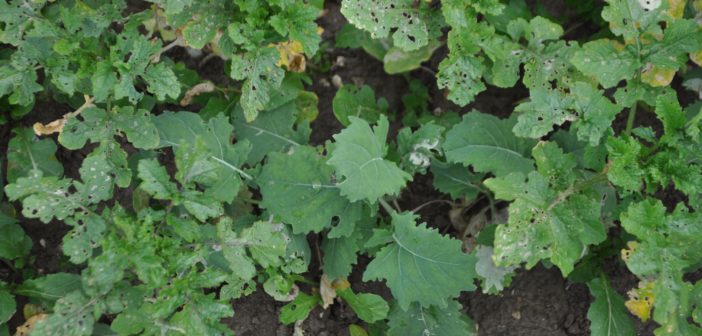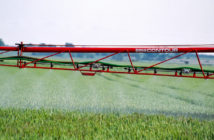The potential for white mustard to reduce the level of cabbage stem flea beetle grazing in oilseed rape when grown as a companion crop is to be investigated in a series of BASF-sponsored trials.
The aim is to help alleviate problems caused by the ban on neonicotinoid insecticide seed treatments over the past three seasons.
These include numerous instances of severe crop damage or complete crop loss due to adult feeding and subsequent larval damage.
Small plot experiments in recent seasons have suggested white mustard grown amongst or next to OSR plants may reduce grazing damage by adult beetles, says Clare Tucker, business development Manager for BASF.
NIAB TAG has been a pioneer in such work, carrying out two years of successive trials looking at different options that might be effective as companion crops, from which it concluded that white mustard had the most potential.
NIAB TAG will be extending its work on the concept this season, both independently and in collaboration with BASF. In parallel, BASF is also setting up its own grower trials to test the concept further.
Several seed rates will be assessed in both trials, to help identify optimum white mustard populations that offer the best degree of protection while causing least competitive impact to the oilseed rape crop, says Mrs Tucker.
“It’s important to do detailed research on this since it’s a fine balance between being an effective deterrent to the beetle whilst not damaging yield potential – white mustard is a vigorous plant.”
Both sets of BASF-sponsored trials will use Clearfield oilseed rape varieties that will enable the white mustard to be controlled effectively with Clearfield herbicides without risk of crop damage, once the OSR is established and beyond the high-risk period of adult grazing, she adds.
“It’s not enough for a companion crop to reduce pest pressure at the critical time. Growers also have to be able to remove it from the crop, otherwise it can compete and affect yields.
“Clearfield gives good control of white mustard, so it’s a good option.”
Simon Kightley, NIAB TAG’s oilseed rape specialist, says experiments carried out in 2015 and 2016 indicated some scope for reducing grazing damage by the adult beetles, with white mustard showing the most promise.
At one site near Cambridge, this technique provided the only protection for OSR plants in 2016, when all other OSR trials and OSR mixtures in companion crop experiments were wiped out by the pest, he adds.
“I am really excited about this discovery,” says Mr Kightley. “In a field of 24ha the only surviving plants last year were within a small number of plots with the white mustard mix. I just can’t wait to get going with the new planting season to validate the concept.”
The BASF-sponsored NIAB TAG work will be carried out at three regional sites, says Jane Kitchen, BASF’s OSR campaign manager.
Plant counts and feeding damage assessments will be taken from emergence through the following two months. Larval counts will be taken in early spring, and plots will be taken to yield.
BASF’s grower trials, supported by the company’s agronomy managers, will test the approach on farm and gain feedback on its practical application, says Ms Kitchen.
“All agronomic inputs on the crops will remain unchanged, and the timing of the Clearfield herbicide application is likely to be around mid-October.
“We think this technique has potential to alleviate early feeding pressure and help crops get through the critical early emergence and growing phase when plants are at their most vulnerable.
“If this approach really works it will go a long way towards restoring grower confidence, by ensuring successful establishment in areas where flea beetle is starting to be a worry and perhaps even in the worst-hit areas.”




